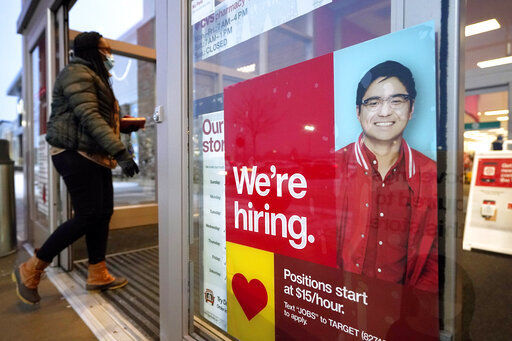WASHINGTON — The number of Americans seeking unemployment benefits fell sharply last week but remained high by historical standards.
Applications for benefits declined 111,000 from the previous week to a seasonally adjusted 730,000, the Labor Department said today. It is the lowest figure since late November. Still, before the virus erupted in the United States last March, weekly applications for unemployment benefits had never topped 700,000, even during the Great Recession of 2008-2009.
The latest figures come as the job market has made scant progress in the past three months. Hiring averaged just 29,000 a month from November through January. Though the unemployment rate was 6.3% in January, a broader measure that includes people who have given up on their job searches is closer to 10%.
All told, 19 million people were receiving unemployment aid as of Feb. 6, up from 18.3 million the previous week. About three-quarters of those recipients are receiving checks from federal benefit programs, including programs that provide jobless aid beyond the 26 weeks given by most states.
Key sectors of the economy, though, are showing signs of picking up as vaccinations increase and government rescue aid works its way through the economy. The Federal Reserve’s ultra-low-rate policy is providing key support, too.
Retail sales soared last month as many Americans spent the $600 checks that were included in a relief package enacted in December. Factory output also rose and has nearly regained its pre-pandemic levels. And sales of newly-built homes soared last month.
Michelle Meyer, an economist at Bank of America, this week upgraded her forecast for growth this year to 6.5%, which would be the fastest since 1984. Daily coronavirus infections are down more than 70% from their peak, Meyer noted, which should lead to more states and cities relaxing business restrictions.
Further economic relief is also likely, she noted, as Congress considers President Joe Biden’s proposal for a new aid package amounting to $1.9 trillion.


